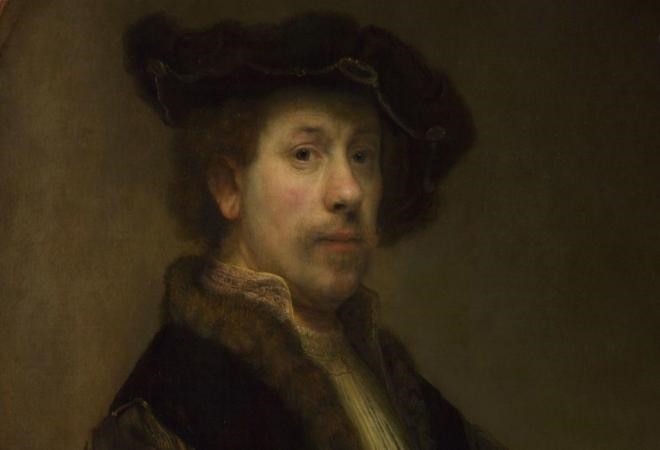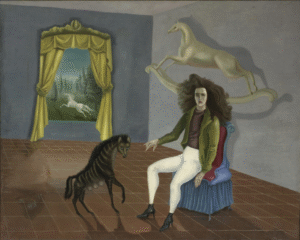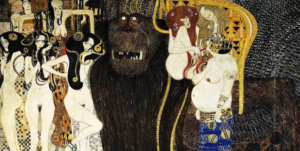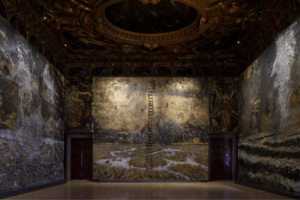Today marks 350 years since Rembrandt’s death. In the remembrance of his celebrated artistic career, more than 400 Rembrandt masterpieces have come together for the exhibition, All the Rembrandts, at the Rijksmuseum in Amsterdam. The historic exhibit will feature 22 paintings and 60 drawings, along with over 300 prints.
Rembrandt is easily regarded as the most significant artist of the Dutch “Golden Age” and one of the most prolific and innovative artists, if not the greatest artist of all time. He would become the most famous of the Dutch Masters and would leave an indelible artistic legacy in the history of art, with unparalleled draughtsmanship, inventive printmaking, and massive works of realism and compelling mastery of light and shadow in his dramatic paintings.
Remembering Rembrandt
Rembrandt Harmenszoon van Rijn was born in 1606, and he was the ninth child in a well-to-do family headed by a father who was a miller. Because his family was relatively well-off, Rembrandt was able to attend a Latin school, and by 14, he was studying at the University of Leiden. It was at the university where he discovered his curiosity for art. And in 1620, he began apprenticing for Jacob van Swanenburgh, a Dutch painter and art dealer, for three years. As the registered master of the young Rembrandt, van Swanenburg influenced Rembrandt with his city scapes and Christian religious scenes.
Rembrandt moved on to a short apprenticeship with Pieter Lastman, a Dutch painter whose paintings were known for their careful attention to bodily features such as hands, feet, and faces. By 1625, Rembrandt opened his studio and shared it with his friend Jan Lievens who had also been an apprentice of Pieter Lastman when he was a young boy. Lievens and Rembrandt collaborated on about two dozen paintings. They split in 1631 when Lievens moved to England.

Two years later in 1633 and for reasons unknown, Rembrandt who’d signed his name Rembrant up until this point, added the “d” to his signature. Some believed that by doing so, his name became the combination of opposite terms. Rem means ‘dim’ in old Dutch while brandt means ‘light.’ It could be that Rembrandt wanted his name to represent the contrasts that are so often seen in his paintings – light and dark.
Over Rembrandt’s career, he created over 300 works with a secular theme. His biblical works included Jesus’ birth, passion, death, and resurrection, stories from Genesis, and characters from the Old Testament. Two of his most renowned biblical paintings are The Conspiracy of Claudius Civilis 1662 and The Return of the Prodigal Son 1669.
Rembrandt’s most famous paintings include Jan Six 1654, The Night Watch 1642, The Storm on the Sea of Galilee 1633, Self-Portrait with Two Circles 1665 and 1659, The Anatomy Lesson of Dr. Nicolaes Tulp 1632, and Danae 1636. Self-Portrait with Beret and Turned-Up Collar 1659 is easily one of his most recognized self-portraits while Bathsheba at Her Bath 1654 (the picture below) is one of his most famous nudes.
To date, Rembrandt’s artworks are still one of the most revered works of all the time, also making them some of the most expensive. Storm of the Sea of Galilee, which was stolen in 1990 and remains missing, is valued at over $50 million. Pendant Portraits of Maerten Soolmans And Oopjen Coppit has a $180 million price tag.

Rembrandt at the Rijksmuseum
From February 15th, 2019 to June 10th, 2019, the Rijksmuseum celebrates Rembrandt with the best examples of his paintings, drawings, and prints that have rarely been on display to the public because they are so fragile. Rembrandt’s greatest masterpiece, The Night Watch (the picture below), will be the highlight.
The Night Watch 1642 is on permanent loan from the Amsterdam Museum. The painting is not only the most famous of Rembrandt’s paintings but one of the most celebrated Dutch Golden Age paintings. The work of art is colossal, standing at 11.91 ft high and 14.34 ft wide. Because of its size, the 34 figures in the painting are practically life-size. Captain Banninck Cocq and seventeen members of the civic militia guards, Kloveniers, commissioned the painting in 1639 to be hung in the Kloveniersdoelen in Amsterdam, the meeting hall for the Musketeers. It took Rembrandt three years to complete the art. It relocated to the Amsterdam Town Hall in 1715 but then moved to the Trippenhuis when Napoleon occupied the Netherlands. The painting then transferred to Rijksmuseum.
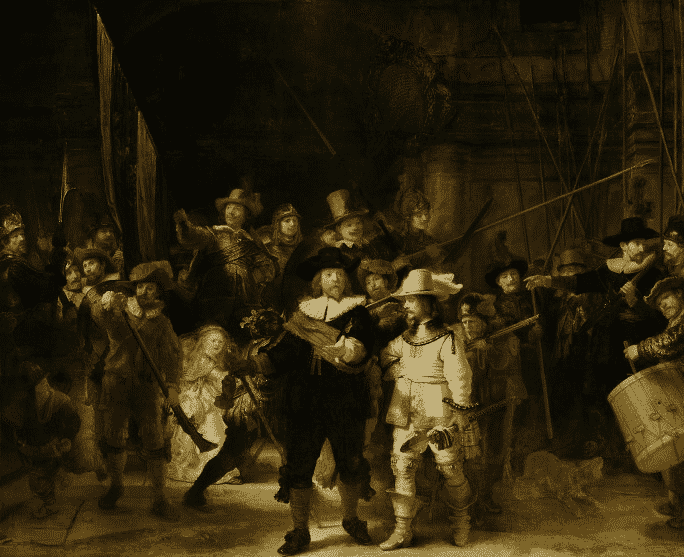
Over the decades, The Night Watch has survived several attacks of vandalism and restorations. In 1911, an angry shoe maker and former Navy chef slashed the canvas. It was attacked again in 1975 by Wilhelmus de Rijk, a mentally ill school teacher who claimed that the Lord ordered him to do it; the bread knife attack resulted in a dozen slashes up to a foot long.
The Night Watch’s string of bad luck continued in 1990 when a man who’d escaped a psychiatric ward sprayed the painting with what was believed to be concentrated sulfuric acid. Fortunately, the museums’ guard applied a neutralizing agent to protect it immediately. Because the acid only penetrated the varnish layer, the painting was fully restored.
The Rijksmuseum All the Rembrandts offers a unique opportunity to experience the impressive legacy that Rembrandt has left behind. The collection covers his entire career, encompassing his different themes, styles and periods. In the first section of the exhibition, audiences can explore a young Rembrandt’s milestones. In the second section, the evolution of Rembrandt becomes evident as he moves from self-portraits to paintings of prominent people in his life, including his wife and his mother. Rembrandt also captured his surroundings, telling stories in his paintings. In the final section of All the Rembrandts, visitors can experience his biblical work.
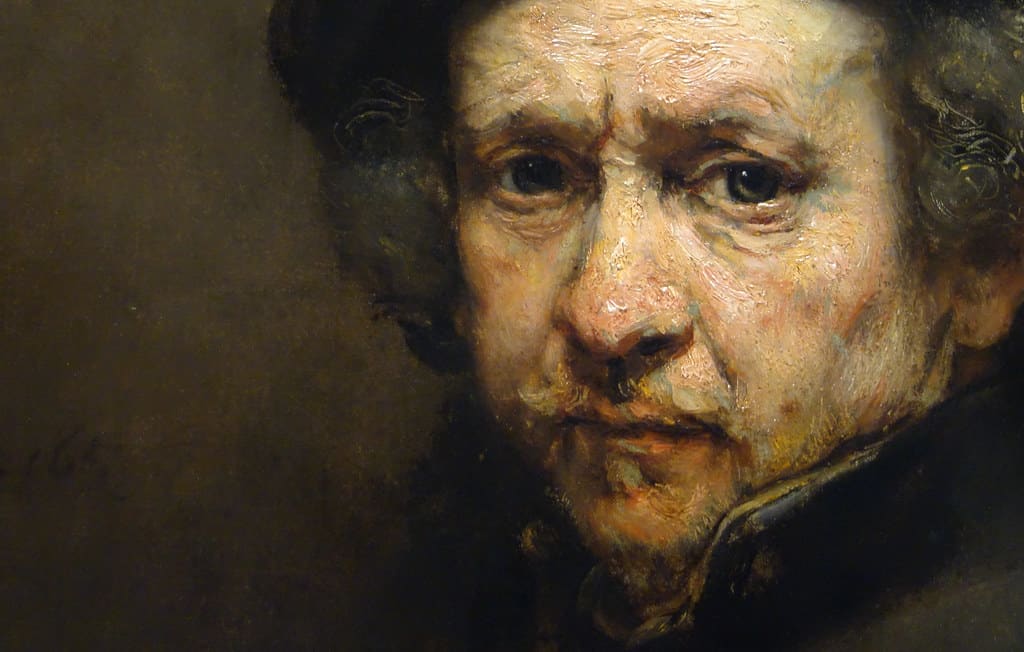
“An honest man always values earning honor over wealth.” – Rembrandt
350 years ago, one of the world’s most famous artists to ever exist died, leaving behind an incredible legacy worth billions today. However, when Rembrandt died in 1669, he died a poor man as he lost most of the wealth he had accumulated from commissions. He was buried in an unmarked grave and the location of his remains are still unknown. Thus, there unfortunately isn’t a grave to visit and honor one of history’s most celebrated artists.

